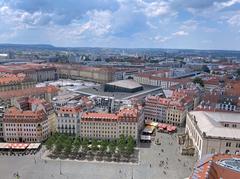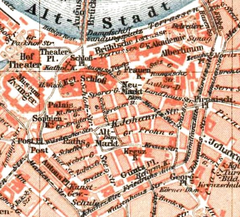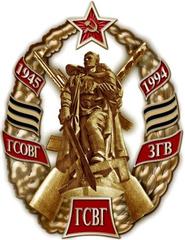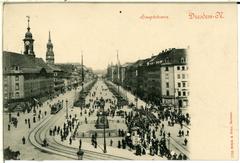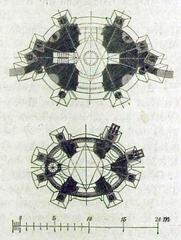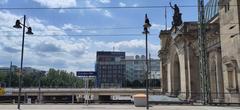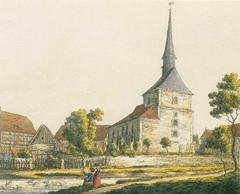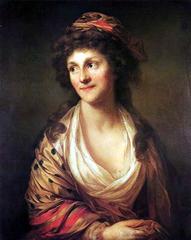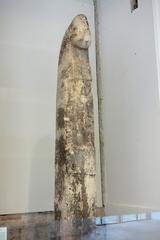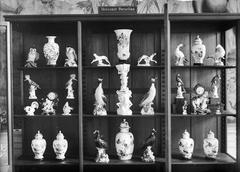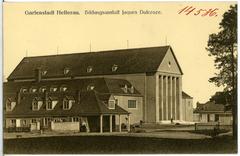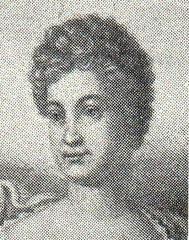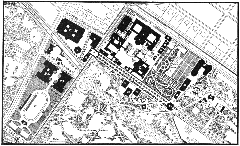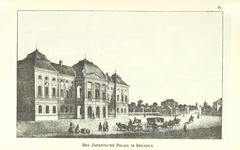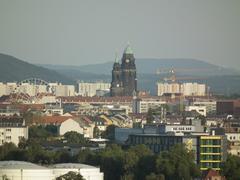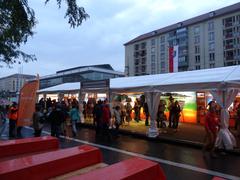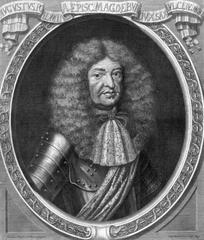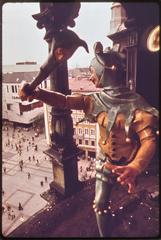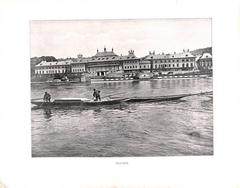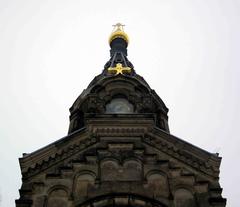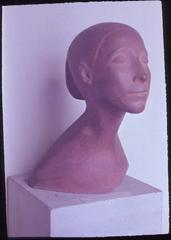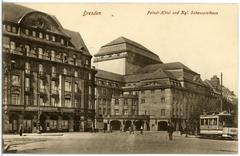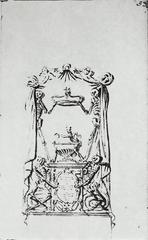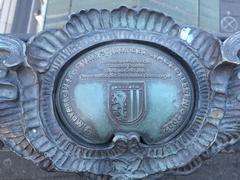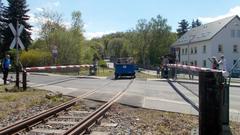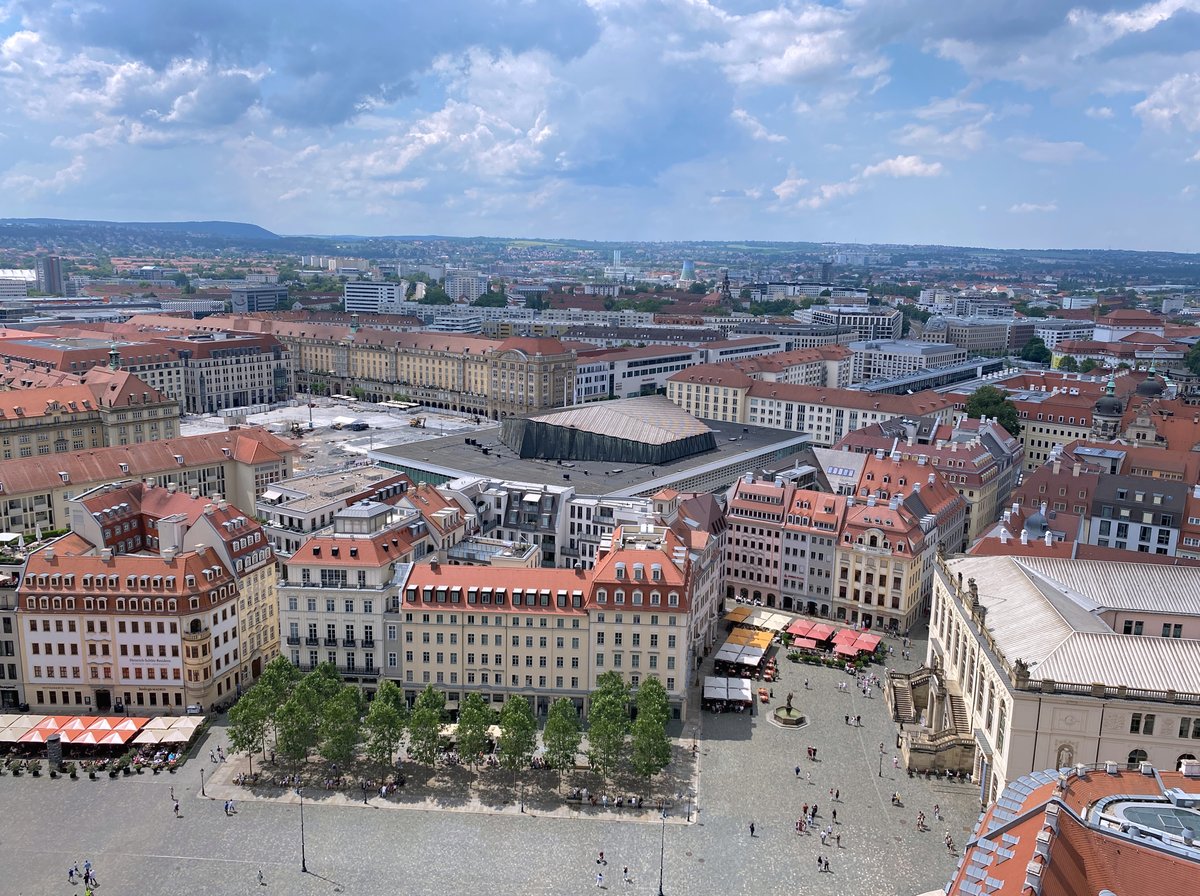
Innere Altstadt Dresden: Visiting Hours, Tickets, and Historical Sites Guide
Date: 14/06/2025
Introduction: History and Cultural Significance
Nestled on the left bank of the Elbe River, the Innere Altstadt Dresden is the historic and cultural nucleus of Saxony’s capital. Its story spans from medieval roots as a fortified market town to Baroque glory under Augustus the Strong. Despite devastating destruction in World War II, the district’s postwar reconstruction has restored its architectural brilliance, making it a testament to resilience and European heritage.
Today, the Innere Altstadt offers a rich experience for history enthusiasts, art lovers, and casual visitors alike. With pedestrian zones, accessible public transit, and a compact layout, exploring highlights like the Frauenkirche, Zwinger Palace, and Residenzschloss is convenient and rewarding. Seasonal events, such as the renowned Striezelmarkt Christmas market, add vibrancy to its historic streets. For more planning resources, consult Dresden Tourism and Germany Travel.
Contents
- Introduction
- Origins and Medieval Foundations
- Renaissance and Baroque Transformation
- 19th-Century Modernization and Urban Expansion
- World War II: Catastrophe and Destruction
- Postwar Reconstruction and Preservation
- Practical Visitor Information
- Visiting Hours and Tickets
- Accessibility and Travel Tips
- Guided Tours and Special Events
- Nearby Attractions and Photographic Spots
- Cultural Significance and Modern Identity
- Frequently Asked Questions (FAQ)
- Conclusion
- Sources
Historical Overview
Origins and Medieval Foundations
The Innere Altstadt’s beginnings trace to a Slavic settlement, first documented in 1206 as “Dresdene,” meaning “floodplain forest.” Its strategic Elbe location fostered trade and growth into a fortified market town by the 13th century (Wikipedia). Remnants of medieval fortifications remain, especially around Wallstraße and Marienstraße. Notable medieval landmarks include the Kreuzkirche (Church of the Holy Cross) and the Altmarkt, Dresden’s central square.
Renaissance and Baroque Transformation
The district flourished as the Saxon electors’ residence during the 15th and 16th centuries. The Residenzschloss evolved into a Renaissance palace (Cicerone Dresden). Augustus the Strong’s 18th-century Baroque vision gave rise to:
- Frauenkirche: Built 1726–1743, reconstructed after WWII, with daily visiting hours typically from 10 AM to 6 PM. Dome access and guided tours require tickets (~€10) (Cicerone Dresden).
- Zwinger Palace: Completed in 1732, now home to prominent museums. Open daily 10 AM–6 PM; museum entry ~€12.
- Taschenbergpalais: Once a royal residence, now a luxury hotel.
- Coselpalais: Rebuilt to highlight Baroque heritage.
19th-Century Modernization and Urban Expansion
The 19th century brought the removal of fortifications, expansion of city squares (Postplatz, Pirnaischer Platz), and construction of bridges linking Altstadt and Neustadt (Wikipedia). New architectural styles emerged, with the Residenzschloss and Altstädter Wache reflecting Neorenaissance and Neoclassical trends. The Altmarkt remained the city’s bustling heart, hosting the Striezelmarkt Christmas market (So lebt Dresden).
World War II: Catastrophe and Destruction
In February 1945, Allied bombing devastated the Innere Altstadt, destroying key landmarks and reshaping Dresden’s urban landscape (Wikipedia). The destruction sparked ongoing debates about restoration and modernization.
Postwar Reconstruction and Preservation
Postwar rebuilding prioritized heritage preservation. The Zwinger reopened by 1965, and the Residenzschloss restoration began in 1987 (Cicerone Dresden). The Frauenkirche, left in ruins as a war memorial, was reconstructed and re-consecrated in 2005 through global fundraising. Many historic structures were painstakingly rebuilt, blending authenticity with modern needs.
Major Historical Sites: Visiting Information
Frauenkirche (Church of Our Lady)
- Significance: Dresden’s Baroque icon and a symbol of reconciliation.
- Visiting Hours: Daily, 10 AM–6 PM (check for variations during services).
- Tickets: Entry is free; dome climb or guided tours ~€10–€15.
- Accessibility: Fully wheelchair accessible.
- Highlights: Panoramic dome views, regular concerts, and historical exhibitions (Germany Travel).
Zwinger Palace
- Significance: Baroque complex housing the Old Masters Picture Gallery and Porcelain Collection.
- Visiting Hours: Museums open Tue–Sun 10 AM–6 PM; closed on Mondays.
- Tickets: ~€12 for adults; combination and discounted tickets available.
- Accessibility: Ramps and elevators throughout (German Culture).
Residenzschloss (Dresden Castle)
- Significance: Former royal seat, now home to the Green Vault, Armoury, and other museums.
- Visiting Hours: Tue–Sun 10 AM–6 PM; closed Mondays.
- Tickets: €14–€19 for combined museum entry; guided tours extra.
- Accessibility: Wheelchair accessible; audio guides available (Germany Footsteps).
Semperoper (Semper Opera House)
- Significance: Architectural gem and venue for opera, ballet, and concerts.
- Visiting Hours: Guided tours daily, 10 AM–5 PM (except Sundays).
- Tickets: Tours ~€12; performance prices vary.
- Accessibility: Fully accessible (Germany Travel).
Additional Noteworthy Sites
- Neumarkt Square: Rebuilt Baroque facades, seasonal markets (Check in Price).
- Brühl’s Terrace: Open 24/7, scenic Elbe views (Ecobnb).
- Procession of Princes: 102-meter porcelain mural on the Stallhof wall.
- Altmarkt: Historic square, site of the Striezelmarkt.
- Albertinum: Contemporary and 19th-century art museum.
- Kreuzkirche: Known for its choir and concerts.
Practical Visitor Information
Getting Around
- Orientation: The Altstadt is compact; landmarks are within a 1 km radius (thecrazytourist.com).
- Public Transport: DVB trams and buses connect the Altstadt to all major points, with central stops at Altmarkt and Postplatz. Tickets: ~€3 single, €8 day pass (dresden.de).
- Parking: Limited; use Altmarkt-Galerie or Hygiene-Museum garages, or park-and-ride (stadtleben.de).
Accessibility
- General: Ramps, elevators, and tactile paving at key sites. Some cobbled streets may be challenging (so-lebt-dresden.de).
- Transport: Low-floor trams and accessible buses.
Best Times to Visit
- Spring–Summer: Outdoor festivals and events.
- Winter: Striezelmarkt Christmas market and ice skating (Germany Footsteps).
- Tip: Early mornings and evenings are less crowded; the Altstadt is beautifully illuminated at night.
Guided Tours and Experiences
- Walking Tours: Daily, in English and German, ~€12–€18.
- Themed Tours: WWII, baroque, food-focused walks.
- River Cruises: Depart from Terrassenufer, from €15 (travelandleisureasia.com).
- Unique Options: Hot rod tours with HOTSOXX® (stadtleben.de).
Dining and Shopping
- Local Cuisine: Sample Sächsische Kartoffelsuppe, Sauerbraten, and Dresdner Stollen.
- Restaurants: Concentrated around Neumarkt, Münzgasse, and Brühl’s Terrace (thetouristchecklist.com).
- Souvenirs: Meissen porcelain, Christmas ornaments, local crafts at Altmarkt and Neumarkt markets (so-lebt-dresden.de).
Family-Friendly Facilities
- Stroller Access: Most sites are accessible, though cobbles can be bumpy.
- Attractions: Großer Garten, Zoo Dresden, Panometer, and Transport Museum offer family activities (stadtleben.de).
Visitor Services
- Restrooms: Public facilities at major squares and museums; small fee applies.
- Wi-Fi & Connectivity: Free Wi-Fi at Altmarkt, Neumarkt, most cafés, and hotels.
- Money: Euro; credit/debit cards widely accepted, though small vendors may prefer cash.
Seasonal Events and Insider Tips
- Striezelmarkt: Late November–December, one of Germany’s oldest Christmas markets (thetouristchecklist.com).
- Music & Film Festivals: May–June for classical concerts; summer for open-air cinema.
- Photography: Sunrise or sunset at Brühl’s Terrace, or from the Frauenkirche dome, offers the best city views.
- Hidden Gems: Seek out the Rosengarten, Fürstenzug mural, and Stallhof courtyard for quieter moments (travelandleisureasia.com).
Frequently Asked Questions (FAQ)
Q: What are the general visiting hours for major attractions?
A: Most are open daily from 10 AM to 6 PM, with variations for holidays and events.
Q: How do I purchase tickets?
A: Tickets can be bought online, at ticket offices, or at museum entrances. Advance booking is recommended in peak seasons.
Q: Are guided tours available in English?
A: Yes, daily English-language tours depart from Neumarkt and Theaterplatz.
Q: Is the Altstadt wheelchair accessible?
A: Major sites are accessible, though cobblestone streets may require caution.
Q: Are there city cards for tourists?
A: The Dresden City Card offers unlimited public transport and discounts at attractions.
Q: Where can I find official visitor information?
A: Dresden Tourism website and at tourist information offices.
Conclusion
Dresden’s Innere Altstadt is a living chronicle of European history. Its carefully restored landmarks, rich cultural programming, and visitor-friendly amenities make it an essential destination for travelers interested in art, architecture, and tradition. By checking opening hours, booking tickets in advance, and taking advantage of guided tours and seasonal events, visitors can fully immerse themselves in this remarkable quarter.
For the latest updates, guided audio tours, and exclusive tips, download the Audiala app or visit official resources. Whether you’re marveling at Baroque masterpieces, savoring Saxon specialties, or strolling illuminated streets at dusk, the Innere Altstadt offers an unforgettable journey through the heart of Dresden.
Sources and Further Reading
- Wikipedia: Innere Altstadt
- Cicerone Dresden
- Germany Travel
- Germany Footsteps
- So lebt Dresden
- Dresden Tourism
- The Crazy Tourist
- Stadtleben.de
- Travel and Leisure Asia
- Travelling King
- Ecobnb
- German Culture
- Check in Price
- thetouristchecklist.com
- northabroad.com
